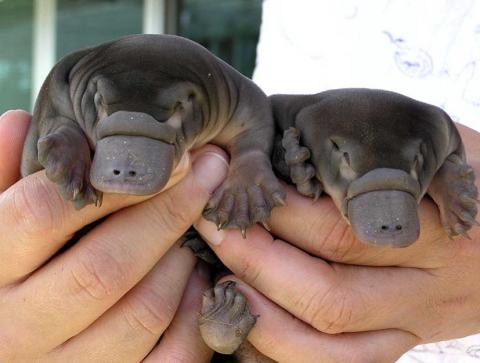Published On
14/07/2024What do you think is the most unique animal in the world?...
Surely it’s our very own platypus!
Our Aussie icon is a mammal that lays eggs, has webbed feet, venomous spurs, electro-receptors in its bill, biofluorescent fur and chews its food without any teeth!
There is truly nothing like them and we are fortunate to have a healthy platypus population on the Central Coast, especially in the Tuggerah Lakes catchment.
Some of our lucky volunteers at the Palm Grove Ourimbah Creek Landcare group occasionally see platypus in Ourimbah Creek. Their many hours of hard work have markedly improved platypus habitat throughout this site.
Platypus make burrows in which to shelter and nest and so they need healthy streambanks where the soil is held together by the roots of riparian plants.
In addition to the work of our amazing volunteers, Council has rehabilitated over 50km of streambank since 2008! These works include site stabilisation, weed control, revegetation with endemic species and fencing to exclude livestock. In many cases, Council works with local landholders and Local Land Services to achieve these outcomes. Caring for our streambanks not only improves habitat for platypus but also helps to improve water quality in our streams and estuaries.
The Central Coast has also led the way in direct action for platypus conservation for decades. In 2004, Yarramalong resident Steve Woodley raised his concerns over platypus injury and deaths associated with illegal yabby traps after discovering traps that had drowned five platypus in Wyong River. A local conservation group called Platypus Awareness and Conservation Team (PACT) was formed with the aim of stopping the accidental drowning of platypuses in yabby traps on the Central Coast. The group aimed to raise community awareness that:
- platypuses live in local creeks and rivers
- platypuses get caught and drown in yabby traps
- it is illegal to use yabby traps where platypuses live
Signs were installed at 11 locations in the Tuggerah Lakes catchment and the team began a regular community platypus day. This event is now run by our environmental education team as part of Harvest Festival on the June long weekend. Interest has grown each year with up to 500 people attending the event at Woodbury Inn Park!
The work of the Central Coast PACT and other groups across the state led to the banning of ‘opera house’ style yabby traps across NSW in 2021. A great outcome for the conservation of platypus and also turtles, cormorants and the rakali (water rat). For more information, see here
Have you ever seen a platypus in the wild?
Follow our event listings for your opportunity to join a Platy-Project activity this September! Or contribute data from your own sightings. We have partnered with the Australian Conservation Foundation for the last three years to contribute to this important project.
By joining the Platy-Project, you’ll become a citizen scientist, have an incredible time getting out into nature and hopefully experience the magical moment of spotting a platypus!
The Platy-Project aims to fill the gaps in our understanding of where this elusive animal lives, so that we can better protect it.
Even though the platypus is one of our most unique and iconic animals, there are big gaps in our knowledge about the creature, including where it lives and how big platypus populations are. With platypus numbers declining, the lack of existing platypus data is a huge barrier to getting the protection it needs from extinction.
By recording where platypuses live, we can help researchers understand more about this incredible creature, its habitat, and help prevent further declines in their numbers.
Participating in the Platy-Project not only supports the platypus, it's also a great way to get outside, slow down and connect with nature. The Australian Conservation Foundation have launched an interactive Platy-Project map which shows where the best places near you are to try and spot a platypus, and lets you record your platypus sightings (if you’re lucky enough to see one) or your attempted sightings. You can view the map here
This article was written by Nick Carson, Environmental Education Officer
